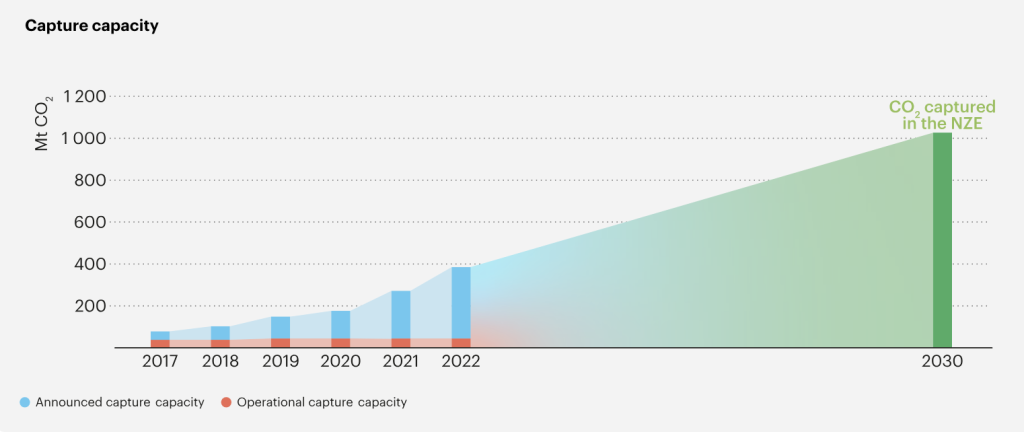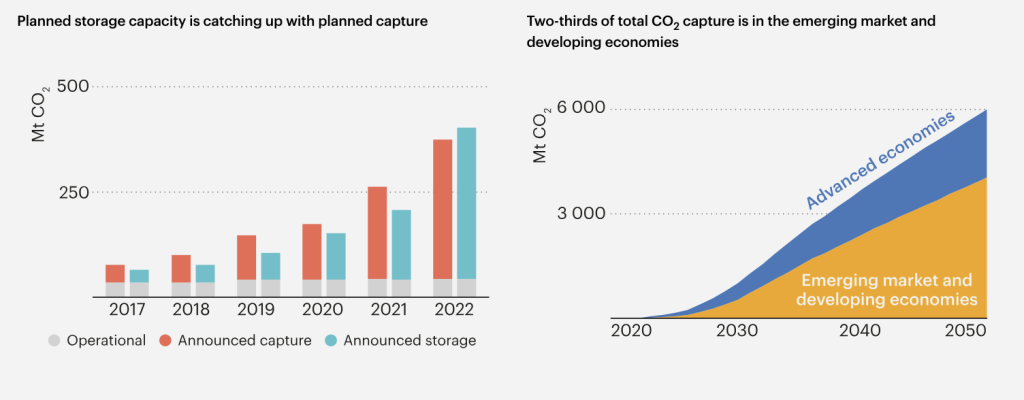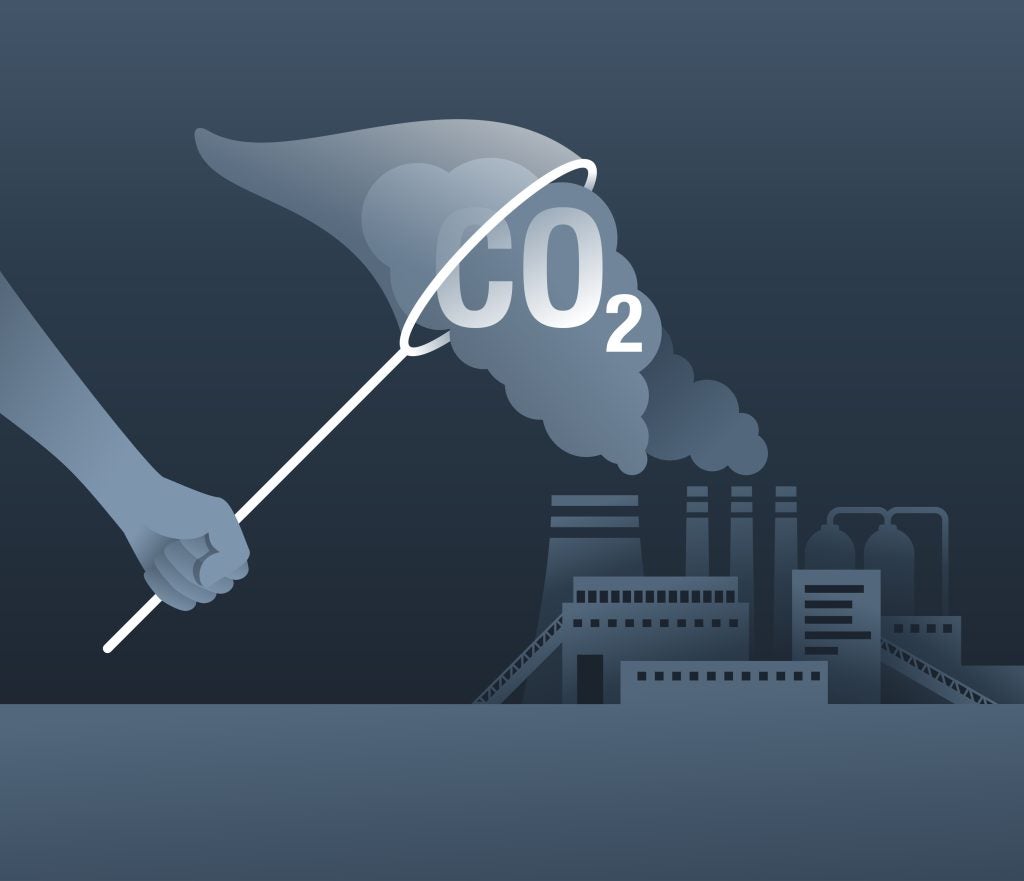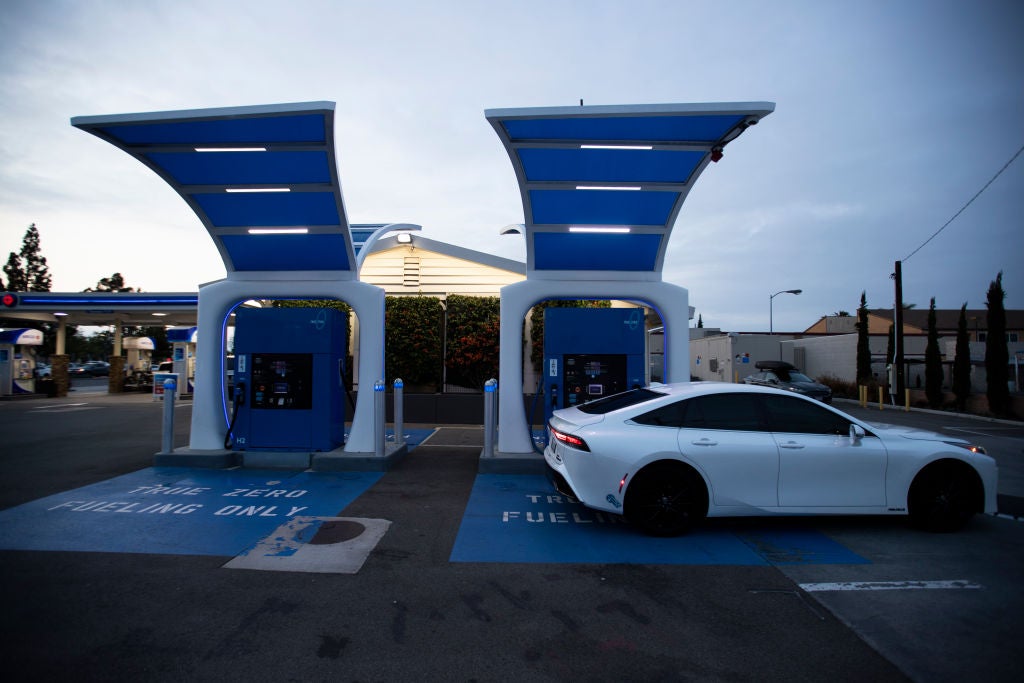It is fair to say that if the Pope wades into a debate over the efficacy of a niche industrial technology, it is one that elicits at least some degree of controversy. In November, the supreme pontiff said in a Vatican statement that relying on carbon capture, utilisation and storage (CCUS) as a solution to fossil fuels was to “paper over the cracks” while allowing the deterioration to continue under the surface. “To suppose that all problems in the future will be able to be solved by new technical interventions is a form of homicidal pragmatism, like pushing a snowball down a hill,” he added.
Today, CCUS captures around 0.1% of global emissions – around 45 million tonnes of carbon dioxide (CO₂). However, both the Intergovernmental Panel on Climate Change (IPCC) and the International Energy Agency (IEA) assert it must capture around a billion tonnes a year by 2030 and several billion by 2050 for the world to achieve its net-zero ambitions.
The last few years have seen growing attention and investment for CCUS as a means of stopping carbon emissions from reaching the atmosphere and increasing global warming. The technology has received a shot in the arm from investment incentives in the US Bipartisan Infrastructure Law and Inflation Reduction Act. Meanwhile, the energy crisis emanating from the Ukraine War has emboldened Western fossil fuel producers to double down on the technology, under the premise that non-Russian oil and gas will be needed to ensure energy security. Under the same premise, in July, the UK Government approved new licences for oil and gas fields in the North Sea.
However, like the Pope, not everyone is sold on the idea. Many argue that the technology is a dangerous distraction from the long-term climate goal of ending the use of fossil fuels; a technology that has proven ineffective, costly and harmful to local communities.
CCUS is at the heart of negotiations at the COP28 climate summit in Dubai. A furious battle is waging over whether fossil fuels should be ‘phased down’ or ‘phased out’ and to what extent the use of ‘abatement’ technologies such as CCUS should permit the continued use of fossil fuels. COP28’s host, the United Arab Emirates, has significant oil and gas extraction plans, but also recently announced plans to use CCUS in its oil and gas sector.
With the price of everything from food to electricity reaching eye-watering heights across even the most advanced economies, and estimates of the cost of the global energy transition ranging from $100trn to $300trn between now and 2050, the average citizen could be forgiven for wondering whether instead of a massive switch to renewables, we could just continue burning fossil fuels and simply capture the carbon.
“Over-promised and under-delivered”
CCUS is the broad moniker given to technologies that capture carbon emissions from industrial facilities or power plants before they reach the atmosphere by separating the CO₂ out from other gases and either storing it underground or incorporating it into products such as cement or chemicals. There are only around 40 CCUS projects operational around the world, with another 25 under construction and 300 in planning. If all these become operational, they would capture 360 million tonnes of CO₂ per year – around 0.7% of the world’s greenhouse gas emissions.
The first, and probably most important, point to make is that if the world keeps consuming oil and gas at current projections, the amount of CCUS required will be inconceivable: 32 billion tonnes by 2050 for a good chance of limiting global warming to 1.5ºC. For context, the IEA’s Net Zero Emissions by 2050 Scenario ('NZE Scenario') calls for a dramatic reduction in fossil fuel use and still requires six billion tonnes of CCUS.
“First and foremost, CCUS should not be used as an excuse to keep emitting,” says Mathilde Fajardy, an energy analyst at the IEA. “Reducing fossil fuel consumption needs to be a priority and CCUS can help where it is too expensive or technically challenging to do so.”
She points out that reducing the use of fossil fuels brings many benefits beyond CO₂ emissions reductions. For example, speeding up the clean energy transition can increase countries’ energy security and reduce air pollution. The other problem is that CCUS technology is both extremely costly and quite inefficient. “It has been around for a long time and it has continuously over-promised and under-delivered,” says Katrine Petersen, senior policy advisor at the environmental think tank E3G.
Even though the technology has existed since the 1970s, take-up has thus far been low. There have been few examples of successful applications and many high-profile failures. Much of this is down to high costs, with CCUS systems often having upfront costs of more than $1bn. Unlike other clean technologies such as wind and solar, CCUS systems cannot be mass produced; each has to be specifically designed for a specific facility. This is made more complex by the fact that each stage of the project – capture, transport and storage – is typically run by different companies.
Indeed, a new study published by Oxford researchers on 4 December found that relying on CCUS to achieve net zero in 2050 would cost at least $30trn more than using renewables, energy efficiency and direct electrification.
[Link src="https://www.energymonitor.ai/all-newsletters/" title="Keep up with Energy Monitor: Subscribe to our weekly newsletter" font-size="20px"]CCUS systems also do not capture 100% of a facility's carbon emissions. Projects typically aim for 90% but can end up achieving much less. The capture system itself requires 13-44% extra energy to run, and storage sites are often located far away and require CO₂ transportation. The storage and transport run the risk of CO₂ leakage, which can be harmful to the local environment and communities.
“There are lots of countries and fossil fuel industry bodies that are really promoting the narrative that it is not the fossil fuels that have to be phased out, it is just their emissions; and for that reason, if we can just eliminate emissions with CCUS, we have solved the problem – but that simply doesn’t align with the science,” says Peterson.
She also points out that most operational CCUS projects do not store their CO₂ but instead use it for enhanced oil recovery, the practice of injecting CO₂ into spent oil wells to extract further oil. “That is not going to deliver any climate value,” says Peterson.
A new study released on 1 December by the climate think tank InfluenceMap found that 80% of corporate advocacy on carbon capture does not align with the IPCC’s climate science. The researchers examined more than 750 instances of corporate advocacy related to CCUS between 2021 and 2023 at more than 500 of the world’s largest companies and 250 industry associations. According to InfluenceMap, there were three major recurring claims within corporate CCUS advocacy that conflict with science and put at risk the 1.5°C target: promoting continued oil and gas expansion by pushing for CCUS use, positioning CCUS as central to global climate targets, and touting CCUS as beneficial for job creation and community support. The researchers also found these lobbying efforts – dominated by oil and gas companies – are highly successful: 16 G20 countries have adopted CCUS policy positions in line with oil and gas ccompanies’ advocacy efforts.
This does not mean that the technology is useless, rather that it needs to be well targeted. According to Olav Øye, a senior adviser at the non-profit Bellona Foundation, CCUS can be applied to some power plants but mainly “it should play a major role in several sectors that have no realistic mitigation option in the near to medium term”.
CCUS: A niche role in net zero
Indeed, both the IEA and the IPCC find that CCUS can play a critical – if limited – role in the net-zero transition. The IEA’s net-zero roadmap foresees the technology mitigating 8% of energy-related emissions by 2050 – annually capturing around one gigatonne of CO₂ (GtCO₂) by 2030 and 5GtCO₂ by 2050.

The agency forecasts that more than a third of that capture capacity in 2050 will be in hard-to-abate industries, notably cement. “This is because a large portion of emissions from making cement are process-related, for which CCUS is one of the only solutions to decarbonise,” says Carl Greenfield, a CCUS analyst at the IEA.
Another third of that 2050 carbon capture capacity will go toward carbon removal and synthetic fuels production. “This will be from bioenergy sources or directly from the air [direct air capture],” says Greenfield. “Most of it will be geologically stored for permanent removal and a fraction will be used to produce low-emissions fuels to decarbonise shipping and aviation.”
Fossil fuel power generation, on the other hand, will constitute just under 15% of capture capacity in 2050, suggests the IEA, mostly to retrofit young plants in emerging economies. “It is so expensive; renewables are just so much cheaper,” says Peterson.
The final 15% will go to low-carbon hydrogen production in regions with low availability of renewable electricity, and low-cost and secure gas supplies (to make ‘blue' hydrogen).
Similar to the IEA, the IPCC in its Sixth Assessment Report, which examined more than 200 mitigation scenarios that could limit warming to 1.5°C, foresees CCUS reducing a median of 1GtCO₂ of fossil fuel-related carbon emissions by 2030 and 2–3GtCO₂ by 2050 – or roughly 6% of all mitigation.
In Europe, Bellona and E3G recently published recommendations for the most appropriate applications of CCUS. The CCS Ladder forecasts an important role for CCUS in the cement and steel sectors, even though a number of steel plants might be able to access sufficient amounts of low-carbon or renewable hydrogen to decarbonise their operations. Ammonia production and waste-to-energy plants are also earmarked as good candidates for the technology.

However, scaling up the use of CCUS will require large-scale deployment of CO₂ transportation and storage infrastructure. While storage is theoretically available in most places, the infrastructure takes considerable time and money to develop. If CCUS is ever going to get off the ground, priority for CO₂ storage and transportation should be given to sectors with no, or very costly, low-emissions alternatives.
On the bright side, the number of CCUS projects in the pipeline tripled in 2021 and has nearly doubled again since then. If all of the announced projects were realised, capture levels could increase by nearly nine-times.

“Momentum is growing now, [but] in the past CCUS has not lived up to its expectations,” says Fajardy. “Translating announcements into actual projects is key. COP28 is an opportunity for industry to demonstrate it is ready and willing to demonstrate this change and see real-world progress.”
CCUS for fossil fuels: addressing the symptoms, not the cause
All eyes are now on the UN’s climate conference in Dubai, with CCUS set to be the stage of a fierce battle between climate purists and fossil-fuel agnostics. For its part, Bellona would like negotiators to agree stronger language on a ‘phase-out’ of fossil fuels, as well as strengthened commitments for the deployment of renewable energy. The NGO wants any definition of ‘abated’ fossil fuels to include all emissions related to production, processing, transport and end use. “In practice, this means very low methane leakages and more than 90% capture rates for power plants,” says Øye. “We also want to avoid that vague promises of future CCUS are used as an excuse to continue business as usual.”
Peterson agrees that a clear definition of ‘abatement’ will be key. “That could then be translated into national policy frameworks and demands that the fossil fuel industry either deliver on their CCUS promises, and to a high standard, or close down their projects and switch to renewables instead.”
Looking ahead, CCUS has an important, if niche, role to play in the world’s net-zero transition, particularly in hard-to-abate sectors where there are few alternatives to decarbonise. Despite the technology’s slow development and deployment thus far, the IEA believes it should start to get cheaper and more effective in the coming years.
However, in the answer to the original question: no, we can’t just keep burning fossil fuels as we are and simply capture the carbon with CCUS technology. According to all the experts interviewed for this article, CCUS has a marginal role – at best – to play in global power production, and COP28 represents one of the last chances to dispel the notion that CCUS makes the current levels of fossil-fuel consumption compatible with limiting global warming to 1.5°C, or even 2°C. The idea that CCUS can allow the world to avoid or slow the phasing out of fossil fuels appears to be a pernicious myth peddled by the fossil fuel lobby – none of whom, perhaps tellingly, agreed to be interviewed for this article – in much the way the tobacco lobby promotes vaping as a healthy alternative to smoking.
“Ultimately, CCUS only addresses the symptoms of the problem, it doesn't address the cause,” says Peterson.















